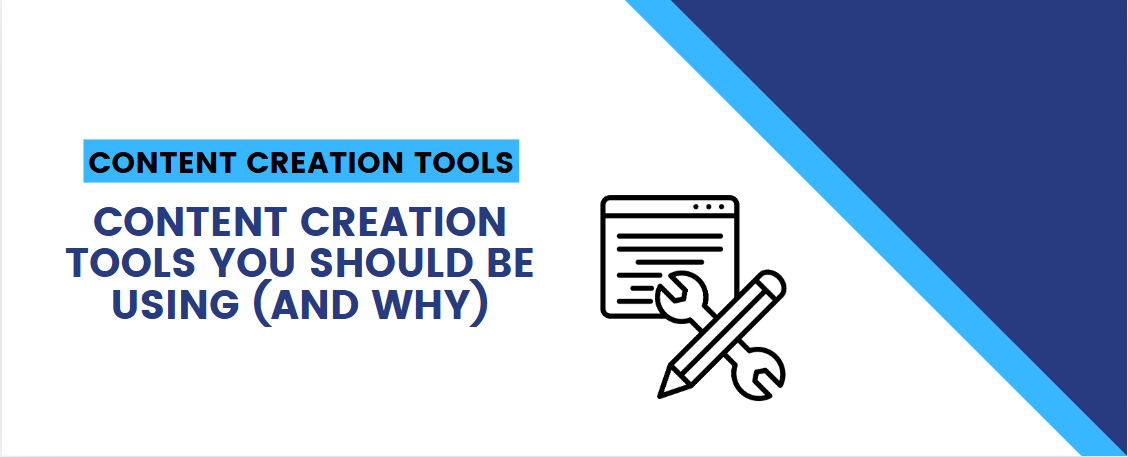Content creation has become one of the most important aspects of building an online presence, whether you’re a business owner, a blogger, a marketer, or a content creator. But let’s be real: creating high-quality content can be time-consuming, complex, and sometimes overwhelming. Luckily, there are tools available that can make your content creation process faster, easier, and more efficient.
In this blog post, we’re going to dive into some of the best content creation tools you should be using, and explain why they’re worth your time. Whether you’re creating blog posts, social media updates, videos, or anything in between, the right tools can help you create better content, faster.
Let’s get started!
1. Grammarly – For Perfecting Your Writing
No one wants to publish content that’s full of grammar mistakes or awkward phrasing. That’s where Grammarly comes in.
Grammarly is a writing assistant that checks your spelling, grammar, punctuation, tone, and style. It’s available as a browser extension, a web app, and integrates with tools like Microsoft Word, Google Docs, and more.
Why You Should Use It:
- Grammar Check: Grammarly scans your content for over 400 types of grammar errors. It’s like having a personal proofreader at your fingertips.
- Tone Detection: It even detects the tone of your writing, ensuring it matches the voice you want to project—be it formal, casual, or friendly.
- Plagiarism Checker: If you ever worry about accidentally copying content, Grammarly has a plagiarism checker that scans your text against millions of sources on the web.
Stats: A study by The Content Marketing Institute found that 72% of marketers say creating high-quality content is their biggest challenge. Grammarly can help make sure your content is as polished and professional as possible.
2. Canva – For Creating Stunning Visuals
Content is not just about words; visuals play a major role in keeping your audience engaged. Canva is one of the easiest-to-use graphic design tools that allows you to create beautiful visuals without being a design expert.
Why You Should Use It:
- User-Friendly: Canva is drag-and-drop, meaning you don’t need any design skills to use it. You can create everything from social media posts to blog images, infographics, presentations, and even videos.
- Templates Galore: Canva has thousands of templates for different types of content—social media posts, email headers, blog images, and more.
- Free & Paid Versions: The free version of Canva offers plenty of features, but the Pro version provides access to premium templates, photos, and additional design elements.
Stats: 35% of marketers use visuals in their content, and studies show that content with visuals gets 94% more views than those without. So, incorporating eye-catching designs into your content can help boost engagement and increase traffic.
3. BuzzSumo – For Content Research and Ideas
Coming up with fresh, relevant content ideas is one of the hardest parts of content creation. That’s where BuzzSumo comes in. It’s a powerful tool for content research and helps you discover what’s trending in your niche.
Why You Should Use It:
- Trending Content: BuzzSumo allows you to search for the most shared and talked-about content across various platforms. This can give you a great sense of what topics are currently popular in your industry.
- Content Analysis: You can also use BuzzSumo to analyze what content is performing well for your competitors. This way, you can identify gaps in your own content strategy.
- Keyword Insights: It helps you discover keywords that drive traffic, so you can optimize your content and improve your SEO.
Stats: According to HubSpot, 61% of marketers say generating traffic and leads is their biggest challenge. BuzzSumo can help you stay ahead by identifying high-performing content topics in your industry.
4. Hemingway Editor – For Easy-to-Read Content
Sometimes, it’s not enough to just write well—your content also needs to be clear and easy to read. Hemingway Editor is an awesome tool to help you simplify your writing.
Why You Should Use It:
- Readability Score: The tool highlights areas where your writing may be hard to understand, such as long sentences, passive voice, or complex words. It then gives you a readability score based on the Flesch-Kincaid Grade Level.
- Concise Suggestions: Hemingway encourages clear, concise writing by suggesting simpler alternatives for complicated words.
- Formatting: It also helps you format your content properly, such as highlighting headings, subheadings, and lists for easy scanning.
Stats: A study by Nielsen found that 79% of users scan web pages, rather than reading them word-for-word. Hemingway helps make sure your content is easy to scan and digest, which is crucial for retaining readers.
5. Google Keyword Planner – For SEO and Keyword Research
If you want your content to rank high on search engines, keyword research is a must. Google Keyword Planner is a free tool that helps you discover the best keywords to target in your content.
Why You Should Use It:
- Keyword Suggestions: Google Keyword Planner gives you keyword ideas based on your business or niche, and provides data on their search volume and competition.
- Local Search Insights: If you’re targeting a specific geographic area, the tool provides insights into local search trends, which is incredibly useful for localized SEO.
- Ad Strategy: If you’re planning to run Google Ads, this tool can also help you identify the best keywords for your paid campaigns.
Stats: According to Backlinko, the first page of Google search results gets 91.5% of all search traffic. By using tools like Google Keyword Planner, you can optimize your content to increase the chances of appearing on that coveted first page.
6. Trello – For Content Planning and Organization
Planning and organizing your content is a critical step in the content creation process. Trello is a project management tool that helps you visually organize your content ideas, deadlines, and tasks.
Why You Should Use It:
- Easy to Use: Trello is based on boards, lists, and cards. You can create different boards for various content projects and move tasks around as needed.
- Collaboration: If you have a team, Trello allows for easy collaboration. You can assign tasks, set deadlines, and track the progress of your content.
- Integration: It integrates with tools like Google Drive, Dropbox, and Slack, making it easy to collaborate and keep everything in one place.
Stats: According to CoSchedule, 65% of the most successful content marketers have a documented content strategy. Trello can help you stay organized and ensure you’re on track to meet your content goals.
7. Lumen5 – For Video Creation
Video content is incredibly popular. In fact, 82% of all internet traffic is expected to come from video by 2025. If you’re looking to create video content easily, Lumen5 is a tool you need to check out.
Why You Should Use It:
- Text-to-Video: Lumen5 allows you to turn blog posts into videos automatically. You just input your text, and the tool picks out key points and creates a video with images, text, and music.
- Customization: You can further customize the video by choosing your own visuals, music, and transitions. You can even upload your own footage.
- Ease of Use: The platform is very user-friendly, and you don’t need any prior video editing experience to create professional-looking videos.
Stats: Video content is shared 1,200% more than text and images combined, according to Wordstream. Lumen5 helps you tap into this powerful content form by making video creation easy and accessible.
8. Buffer – For Social Media Scheduling
Once you create your content, you’ll want to share it with the world. Buffer is a social media management tool that allows you to schedule, publish, and analyze your social media posts all from one dashboard.
Why You Should Use It:
- Social Media Scheduling: With Buffer, you can schedule your posts in advance, so you don’t have to worry about posting in real time.
- Analytics: Buffer provides in-depth analytics on how your posts are performing. This helps you understand what type of content resonates with your audience.
- Team Collaboration: If you work with a team, Buffer allows multiple people to collaborate on posts and manage different social media accounts.
Stats: According to Sprout Social, 91% of social media marketers say that social media is important for their business. Buffer helps you manage and optimize your social media content with ease.
Conclusion
Creating great content requires more than just writing—it’s about using the right tools to help streamline the process, improve your results, and make your content stand out. Whether you’re polishing your writing with Grammarly, designing beautiful visuals with Canva, or researching keywords with Google Keyword Planner, these tools can make a huge difference.
Remember, great content doesn’t just happen by accident. It takes time, effort, and the right resources. By using the tools we’ve discussed in this blog, you’ll be able to create content that’s more effective, engaging, and professional-looking—ultimately driving more traffic to your site and increasing your online success.
So go ahead and give these tools a try! Happy creating!


